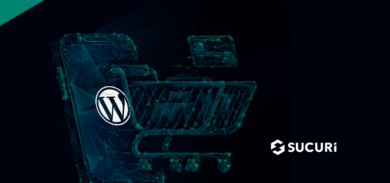Picture this: It’s October 2016, and you’re trying to access your favorite websites – Twitter, Netflix, Spotify – but nothing’s loading. If you can believe it, this wasn’t just a bad day for the internet; it was the result of one of the largest DDoS attacks in history, targeting Dyn, a major DNS provider. Fast forward to 2023, and Google Cloud is fending off another massive attack, this time peaking at 398 million requests per second. These incidents highlight a crucial aspect of our digital world: the need for robust website monitoring.
But what exactly is website monitoring? At its core, it’s the process of continuously checking a website’s availability, performance, and security. It’s like having a vigilant guardian for your online presence, always on the lookout for potential issues. In the online world, where a single minute of downtime can cost thousands of dollars and damage your reputation, website monitoring isn’t just nice to have – it’s critical.
Let’s geek out a bit and dive into the world of website monitoring, exploring why it’s essential for security, performance, and user experience. Trust me, by the end of this article, you’ll be itching to set up monitoring for your own site!
Contents
- What is website monitoring?
- How website monitoring works
- Benefits of website monitoring
- Choosing the right website monitoring tool
- Best practices for Website Monitoring
- Additional resources
What is website monitoring?
Website monitoring is more than just checking if your site is up or down. It’s a comprehensive approach to ensuring your website is functioning optimally at all times. Think of it as a health check-up for your website, but instead of annual visits, it’s happening continuously, 24/7.
There are several types of website monitoring, each focusing on different aspects of your site’s health:
- Uptime monitoring: This is the most basic form, checking if your website is accessible to users.
- Performance monitoring: This measures how quickly your site loads and responds to user requests.
- Security monitoring: This keeps an eye out for potential security threats, malware, and unauthorized changes to your site.
Beyond the performance and security of your site, there’s also monitoring website SEO and overall function. Each type of monitoring plays a crucial role in maintaining a healthy, efficient, and secure website. By implementing a comprehensive monitoring strategy, you’re essentially creating a safety net that catches issues before they become major problems.
How website monitoring works
Now, let’s pull back the curtain and see how the magic happens. Website monitoring tools use a variety of technologies and processes to keep your site in check.
At the heart of most monitoring systems are automated scripts that periodically send requests to your website. These scripts act like virtual users, accessing your site from different locations around the world. They check for response times, analyze the returned data, and flag any issues they encounter.
For more advanced monitoring, tools like Sucuri use sophisticated methods such as:
- Continuous scanning and real-time alerts: Regular checks for malware, backdoors, and other security threats. Immediate notification when issues are detected.
- Traffic analysis: Monitoring incoming traffic patterns to detect potential DDoS attacks.
- File integrity monitoring: Checking for changes to your website files.
The data collected from these processes is then compiled into comprehensive reports, giving you a bird’s-eye view of your website’s health and performance.
Benefits of website monitoring
Now that we understand what website monitoring is and how it works, let’s talk about why it’s so darn important. The benefits of website monitoring are numerous and can significantly impact your online presence.
Minimizing downtime
Downtime is the silent killer of online businesses. Website monitoring acts as your 24/7 vigilant guard, constantly checking your site’s pulse and alerting you to issues faster than you can say “server crash.” This rapid response time is crucial, as even small businesses can lose significant revenue and customer trust during outages.
Moreover, monitoring helps identify patterns in your site’s performance. By recognizing these patterns, you can proactively address issues before they become full-blown problems and ensure your site stays up and running when it matters most.
Optimizing performance
Performance optimization is like tuning a race car – it’s all about squeezing out every bit of speed. Website monitoring tools provide a wealth of data on your site’s performance, from server response times to page load speeds. This is critical, as many mobile users will abandon a site that takes longer than a few seconds to load.
Advanced monitoring tools can even simulate user journeys, identifying bottlenecks in specific processes like checkout or form submissions. This granular data allows for targeted optimizations that can significantly impact your bottom line, improving not just speed but also user retention and conversion rates.
Enhancing user experience
User experience (UX) is the secret sauce of successful websites, and monitoring contributes to UX in ways you might not immediately realize. Beyond just keeping your site up and fast, it ensures that all features and functionalities are working as intended. Without monitoring, you might not notice if crucial elements like your ‘Add to Cart’ button stop working until sales mysteriously drop.
Consistent monitoring also allows you to track user behavior over time. You can see how changes to your site impact user engagement, helping you make data-driven decisions to continually improve the user experience. This ongoing refinement based on real user data is key to staying competitive in the digital landscape.
Identifying security threats
Security threats are constantly evolving, and website monitoring is your trusty sheriff in this wild west. Modern monitoring tools don’t just check if your site is up; they can detect malware infections, unauthorized file changes, and even potential DDoS attacks. Some advanced tools use machine learning to identify patterns of suspicious behavior, alerting you to potential threats before they become actual breaches.
Think of investing in robust monitoring as a form of insurance – it might seem unnecessary until you really need it. By keeping a vigilant eye on your site’s security, you’re protecting not just your data, but your reputation and bottom line as well.
Improving SEO
Search engines are like picky eaters – they have very specific preferences, favoring sites that are fast, reliable, and provide a good user experience. Website monitoring helps you tick all these boxes. Google, for instance, uses page speed as a ranking factor, and uptime is crucial for SEO. If your site is down when Google’s crawlers come knocking, it could negatively impact your rankings.
Monitoring also helps maintain your site’s reputation with search engines. Frequent downtimes or slow load times can signal to search engines that your site provides a poor user experience, potentially leading to lower rankings. By ensuring your site is always performing at its best, you’re giving yourself the best chance to climb those search engine results pages.
Providing valuable insights
Data is the new oil, and website monitoring provides a gusher of valuable information. Beyond just performance metrics, monitoring can offer insights into user behavior, peak traffic times, popular content, and more. This data allows you to make informed decisions about everything from server upgrades to content strategy, ensuring your website not only stays up but continually improves and evolves.
Some monitoring tools even integrate with analytics platforms, allowing you to correlate site performance with business metrics. Imagine being able to see how a 0.5-second improvement in load time impacts your conversion rate – that’s the power of these insights. By leveraging this data, you’re not just maintaining your site; you’re actively driving your business forward.
Choosing the right website monitoring tool
With so many options available, choosing the right monitoring tool can feel overwhelming. Here are some factors to consider:
1 – Features
The feature set of a monitoring tool can make or break its usefulness for your specific needs. It’s not just about having a laundry list of features; it’s about having the right ones for your website.
Start by assessing your website’s complexity and your monitoring goals. Are you running a simple blog, or a complex e-commerce platform? Do you need basic uptime monitoring, or are you looking for in-depth performance analytics?
Look for tools that offer:
- Uptime monitoring
- Performance monitoring (page load times, server response times)
- Security scanning (malware detection, vulnerability assessments)
- Real-user monitoring
- API monitoring (if applicable)
Remember, more isn’t always better. A tool with a ton of features you’ll never use might end up being more confusing than helpful. On the flip side, if you’re planning to scale your website, you might want a tool that offers more than you currently need.
2 – Budget
Ah, the almighty dollar. Budget considerations are crucial, but remember, the cheapest option isn’t always the most cost-effective in the long run.
Monitoring tools come in a wide range of price points:
- Free tools: Great for small websites or those just starting out. However, they often have limited features and may not be suitable for business-critical sites.
- Basic paid plans: Usually ranging from $10-$50 per month. These often offer more comprehensive monitoring but may lack advanced features.
- Advanced plans: Can range from $100-$1000+ per month. These are typically geared towards larger websites or those with specific needs.
- Enterprise solutions: Often priced on a custom basis, these offer the most comprehensive features and support.
When considering your budget, think about the potential cost of downtime or security breaches. A more expensive tool that helps prevent these issues might actually save you money in the long run.
3 – Ease of use
You shouldn’t need a Ph.D. in computer science to use your monitoring tool. The best tools strike a balance between powerful features and user-friendly interfaces.
Consider:
- The initial setup process: How long does it take to get up and running?
- The learning curve: Is it intuitive, or will your team need extensive training?
- Dashboard clarity: Is the information presented in a clear, actionable way?
- Customization options: Can you tailor the tool to your specific needs without a headache?
Look for tools that offer good documentation, video tutorials, and customer support that are quick to respond. These can significantly ease the adoption process.
Remember, a tool is only as good as its user. If it’s too complicated, you might not use it to its full potential and negate any benefits it might offer.
4 – Support
When it comes to website monitoring, good support isn’t just nice to have – it’s essential. Your website doesn’t sleep, and neither should your support team.
Key aspects to consider:
- Availability: Look for 24/7 support, especially if your website caters to a global audience.
- Response time: How quickly can you expect a response when you have an issue?
- Support channels: Does the tool offer support via email, chat, phone, or all of the above?
- Knowledge base: Is there a comprehensive self-help section for common issues?
- Community forums: Active user communities can be a great resource for tips and troubleshooting.
Don’t underestimate the value of good support. When your site goes down at 2 AM, you’ll be thankful for that round-the-clock support team!
5 – Scalability:
Your website is going to grow (that’s the plan, right?), and your monitoring tool should be able to grow with it.
Consider:
- Pricing tiers: Does the tool offer different plans that you can upgrade to as your needs increase?
- Feature expansion: Can you add on additional features or integrations as needed?
- Multi-site monitoring: If you plan to launch multiple websites, can the tool handle them all from a single dashboard?
- API access: Does the tool offer API access for custom integrations or expanded functionality?
- Data retention: As your site grows, you’ll likely want access to more historical data. Does the tool offer flexible data retention options?
A scalable tool will save you the headache of having to switch providers down the line, which can be a time-consuming and potentially disruptive process.
Sucuri, in particular, offers a unique combination of security monitoring and performance optimization. Our team of security experts provides round-the-clock support, making us an excellent choice for businesses that prioritize security.
Best practices for website monitoring
Implementing website monitoring is just the first step. To get the most out of your monitoring efforts, consider these best practices:
- Regular testing: Don’t just set it and forget it. Regularly review your monitoring setup to ensure it’s still meeting your needs.
- Set up effective alerts: Configure your alerts to notify the right people at the right time. Too many alerts can lead to alert fatigue, while too few might mean missing critical issues.
- Use data to drive decisions: The information gathered through monitoring is gold. Use it to make informed decisions about improvements and optimizations.
- Monitor from multiple locations: If you have a global audience, make sure you’re monitoring your site’s performance from various geographic locations.
- Test different scenarios: Don’t just monitor your homepage. Set up checks for critical user journeys, like checkout processes or login functionality.
- Keep security in mind: Regular security scans should be part of your monitoring routine. Tools like Sucuri can help automate this process.
- Stay informed: Keep up with the latest trends and best practices in website monitoring and security. The digital landscape is always evolving, and so should your monitoring strategy.
Remember, Sucuri’s team of experts can provide guidance on implementing these best practices, especially when it comes to security monitoring.
Simply put, website monitoring isn’t just a nice-to-have – it’s a must-have. From ensuring your site is always up and running to protecting against security threats, monitoring plays a crucial role in maintaining a successful online presence.
We’ve covered a lot of ground, from understanding what website monitoring is and how it works, to exploring its benefits and best practices. Remember, the goal of monitoring isn’t just to collect data – it’s to use that data to continually improve your website’s performance, security, and user experience.
Whether you’re running a small blog or managing a large e-commerce site, implementing a robust monitoring strategy can make a world of difference. So why not start today? Take a look at your current setup, consider the tools we’ve discussed, and think about how you can level up your website monitoring game.
Additional resources
Want to dive deeper into the world of website monitoring? Here are some resources to get you started:
- Sucuri Blog (https://blog.sucuri.net/): A wealth of information on website security and performance.
- Sucuri SiteCheck (https://sitecheck.sucuri.net/): Free website malware and security checker.
- Google’s Web.dev (https://web.dev/): Offers tools and guidance for website performance optimization.
- OWASP (https://owasp.org/): A great resource for understanding web application security risks.
Need more information or assistance with website monitoring? Don’t hesitate to chat with us! We’re always ready to help you keep your website secure and performing at its best.










